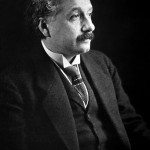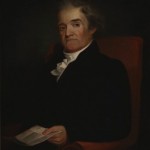Weekly Wrap Volume 73
The names that come to mind at the mention of the Italian Renaissance are the likes of Medici, Da Vinci, and Galileo. Few, however, know the name Bartolomeo Cristofori, an accomplished craftsman who lived and worked during that era. You may not know his name, but you do know his greatest invention- the “harpsichord with loud and soft,” better known today as the piano. Little is known of Cristofori’s family or childhood, other than that he was born in 1655 and grew up in the town of Padua, located in the Republic of Venice. As an adult, besides working on a… (more)
 Why Do Radio Signals Travel Farther at Night than in the Day?
Why Do Radio Signals Travel Farther at Night than in the Day?
Not all radio waves travel farther at night than during the day, but some, short and medium wave, which AM radio signals fall under, definitely can given the right conditions. The main reason this is the case has to do with the signal interacting with a particular layer of the atmosphere known as the ionosphere, and how this interaction changes from the nighttime to the daytime.The ionosphere is a layer of the upper atmosphere about 50 to 600 miles above sea level. It gets its name because it is ionized consistently by solar and cosmic… (more)
 Why Pencil “Lead” is Called “Lead”
Why Pencil “Lead” is Called “Lead”
In the 16th century, a large deposit of pure, solid graphite was discovered in Borrowdale, England. This was the first time in recorded history that high quality, solid graphite had been found. When metallurgists first encountered this substance, they thought it was some sort of black lead, rather than a form of carbon. Thus, they called it “plumbago”, which is derived from “plumbum”, which is Latin for “lead”. It didn’t take people long to realize that solid sticks of high quality graphite were good for marking things. At… (more)
Next to the bark of a dog or the gentle meowing of a cat, the crow of a rooster is one of the most recognisable animal noises on Earth; but why exactly do roosters feel the need to crow and is there any truth to the idea that they crow more (or only) in the morning? Surprisingly, although chickens are one of the most ubiquitous (and delicious) animals on the planet, it wasn’t until 2013 that scientists definitively answered these questions. First and foremost, it’s important for us to point out that roosters will crow at all times and in response… (more)
 The Theft and Half Century Journey of Einstein’s Brain
The Theft and Half Century Journey of Einstein’s Brain
On April 17, 1955, the greatest scientist of his generation checked himself into Princeton Hospital due to chest pains. By early the next morning, Albert Einstein had died from an abdominal aortic aneurysm – the rupture of the aorta, the heart vessel that’s the body’s main supplier of blood. While word was still getting out that the great Dr. Einstein had passed away at the age of 76, something rather disturbing was happening at the hospital, if not downright nefarious. Einstein’s brain, the keeper of one of the world’s greatest intellects, had been stolen. And that is just the beginning of the story. Dr. Thomas Stolz Harvey was the pathologist on call during the early morning hours of the 18th and was the doctor assigned to attend to Dr. Einstein. Seven hours… (more)
Bonus Quick Facts:
- The equal sign (“=”) was invented in 1557 by Welsh mathematician Robert Recorde, who was fed up with writing “is equal to” in his equations. He chose the two lines because “no two things can be more equal”.
- The term “cup of Joe” stems from American soldiers in World War II. “G.I. Joes” were known to consume a large amount of coffee, as Maxwell Instant Coffee was included in their rations.
- It turns out, the panic response when a tarantula is crawling on your leg or the like is exactly what is happening when you are getting tickled. The body’s response to being tickled is panic and anxiety. It is thought that this is a defense mechanism for when an external touch, such as a poisonous insect crawling on you, might be occurring. The body needs to react quickly to this unanticipated touch and without time for much conscious thought, so produces the panic reaction.
- As you age, the number of taste buds you have tend to diminish. An average child is born with about 10,000 taste buds. An average elderly person only has about 5,000. This is partially why many kids hate vegetables so much. Vegetables can be very bitter to “super tasters” or those close to that. As you age and your taste buds diminish, this bitter flavor goes away somewhat and changes the taste of the vegetables dramatically in the process.
- Bone cells burn about 2.3 Calories per kilogram. If you are a man, on average about 15% of your body mass is made up of bone. For women, that number is around 12%.
- Catgut strings (note: not ever known to have been made from literal cat guts) are prepared by cleaning the intestines of fat and other undesirable additions. They do this by soaking the guts in water, then use a special knife for scraping. From there, the intestines are soaked in an alkaline substance and smoothed out. The surviving microbes on the catgut are killed via sulfuric fumes. The intestines are then ready to be stretched/wound/etc. into appropriately sized strings.
- Tim Berners-Lee, the creator of the Web, chose the name “World Wide Web” because he wanted to emphasize that, in this global hypertext system, anything could link to anything else. Alternative names he considered were: “Mine of Information” (Moi); “The Information Mine” (Tim); and “Information Mesh” (which was discarded as it looked too much like “Information Mess”)
- “Adventures of Luke Starkiller, As Taken From the Journal of the Whills, Saga 1: The Star Wars” was the original title of “Star Wars: A New Hope”.
- The most vivid colors on tree leaves can typically be observed after a succession of very warm sunny days in autumn, which in turn give way to cold, but not freezing, nights. This is a result of the fact that a lot of sugars will be produced in the daytime in these leaves, assuming there is still moisture present, but the veins in the leaves will be closed off, or nearly closed off, so the sugars remain in the leaves. This spurs production of the anthocyanin pigments. If there are also carotenoids present, you’ll see vivid leaves which may contain some mix of yellow/orange/red/purple colors.
- 7-Eleven pioneered the convenience store concept way back in 1927 at the Southland Ice Company in Dallas, Texas. Joe C. Thompson, the manager of the plant, started selling milk, eggs, and bread from an ice dock on Sundays and evenings when the grocery stores were closed. He eventually bought the Southland Ice Company and turned it into the Southland Corporation, thus opening the first ever “convenience” store.
Other Interesting Stuff:
Buffalo wings were invented sometime around the 1960s by either John Young or Frank and Teressa Bellissimo in Buffalo, New York. The spreading of this tasty appetizer was relatively slow until Football stepped in. What happened? From 1990-1993, the Buffalo Bills made it to the Super Bowl four consecutive seasons. During this time, the media covering the team also did features on the region itself, including talking quite a bit about local food and particularly highlighting these spicy, fried chicken wings. Thanks to this coverage, Buffalo wings saw a huge surge in popularity… (more)
 While the Roman Colosseum is More Famous Today, Its Predecessor, the Circus Maximus, Could Hold About 3 to 6 Times More People
While the Roman Colosseum is More Famous Today, Its Predecessor, the Circus Maximus, Could Hold About 3 to 6 Times More People
The Colosseum is one of the most iconic landmarks in Rome and incredibly popular with tourists. Movies would have you think that chariot races, gladiator shows, and battle simulations always took place there, but that isn’t true. The Colosseum was finished relatively recently, all things considered. Before its completion, a more popular venue for such things was the Circus Maximus. The Circus Maximus was arguably the largest structure in ancient Rome, with the capacity to seat 250,000 people according… (more)
 Why Spicy Foods Can Cause Your Nose to Run
Why Spicy Foods Can Cause Your Nose to Run
In most spicy foods, this is thanks to the same chemicals that cause the burning sensation on your tongue, namely capsaicin or allyl isothiocyanate. Capsaicin is chemical found in fruits of the genus Capsicum, which includes peppers. It is present, usually in relatively high amounts, in the placental tissue that holds the seeds of the peppers, as well as in lower concentrations in other parts of the fruit. The capsaicin works as a deterrent to stop various animals, particularly mammals that would crunch the seeds, from… (more)
 Noah Webster and Moving Away from British English
Noah Webster and Moving Away from British English
Eliminating the unnecessary u, many duplicate consonants, the redundant e, converting diphthongs into simple vowels and turning the combination of e and r at the end of a word the right way around, Americans significantly changed the spelling of many English words. And it was done with the best of intentions – to make spelling easier. American English began to deviate from British English as soon as the United States won its independence from Great Britain. The brainchild of Noah Webster, the differences in spelling between… (more)
 Why the French-Founded Notre Dame School’s Athletic Teams are the “Fighting Irish”
Why the French-Founded Notre Dame School’s Athletic Teams are the “Fighting Irish”
When the green and blue uniformed athletes of the University of Notre Dame run on to the field or court, their fans are rooting for the “Fighting Irish.” Represented by a small green leprechaun- hat tilted with his fists up, ready to fight- the athletic teams of this South Bend, Indiana Catholic school have been playing under this moniker for, officially, 87 years. But here’s the thing: the school was actually founded by French Catholic priests, not Irish Catholics. So, how did Notre Dame become the “Fighting Irish?” Shouldn’t they be called the “Fighting French?” In November 1842… (more)
 Why the Same Side of the Moon Always Faces the Earth
Why the Same Side of the Moon Always Faces the Earth
One Moon “day” is approximately 29 1/2 Earth days. This rotation coincides with its orbit around the Earth so that we only see about 59% of the surface of the Moon from Earth. When the Moon first formed, its rotational speed and orbit were very different than they are now. Over time, the Earth’s gravitational field gradually slowed the Moon’s rotation until the orbital period and the rotational speed stabilized, making one side of the Moon always face the Earth. How does this work? Simply put -tidal friction. For a slightly less simple explanation, we’ll have to put our science caps on. But stick with it; it’s fascinating… (more)
This Week’s Podcast Episodes:
- Podcast Episode 326: The Secret Agent Who Played in the Major Leagues
- Podcast Episode #327: Morton’s Girl
- Podcast Episode #328: The Birth of Baby Carrots
- Podcast Epiosde #329: The Man in the Iron Mask
- Podcast Episode #330: Newbery
Quote of the Week:
- “When Students cheat on exams it’s because our school system values grades more than students value learning.” – Neil Degrasse Tyson
| Share the Knowledge! |
|







